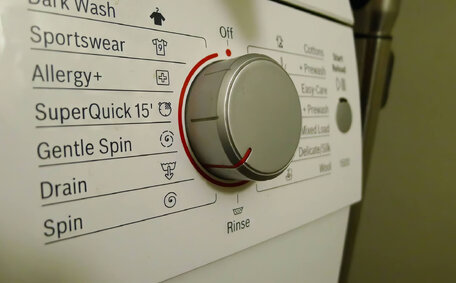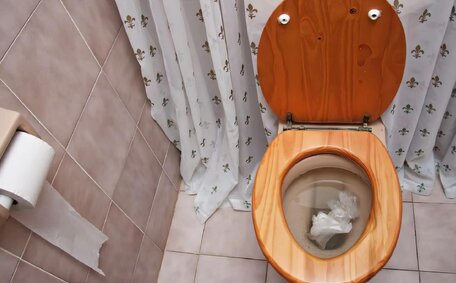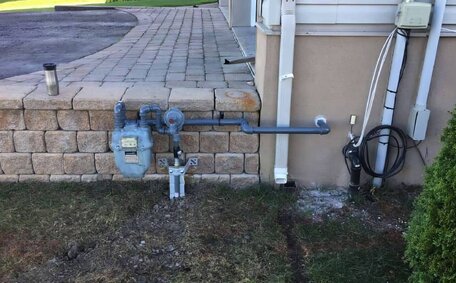Understanding What Causes Pipes to Burst
There are a few key reasons why water pipes in homes can suddenly burst. As pipes age and deteriorate over time, cracks and leaks can form more easily. Older pipes made from materials like ceramic, metal, or galvanised steel are particularly vulnerable to corrosion and rusting inside the pipe walls over decades of use.
Tree roots are one of the most common threats, as they can infiltrate and encircle underground water pipes, eventually leading to cracks or joint separations. Changes in weather and temperature extremes can also stress materials, triggering splits or ruptures.
Narrower pipe diameters under 1 inch wide tend to be more susceptible to bursting compared to wider tubes. The type of piping material also plays a role, with plastic options like PVC and polyethylene offering more flexibility and durability compared to old metal piping.
For homeowners, being aware of these potential pipe burst causes can help identify risks and determine if plumbing inspections or upgrades are warranted. Routine checks for tiny leaks, dripping fixtures, moisture around pipes, and other subtle signs of issues can reveal problems before a full rupture occurs.
Detecting Early Signs of Pipe Damage
There are a few subtle signs of potential pipe issues that homeowners should monitor. Changes in your water quality, such as rusty, brown, or dirty appearance, strange odours, and altered taste can indicate corrosion and contaminant intrusion in damaged pipes.
Gradual drops in water pressure, longer wait times for hot water, and spikes in unexplained water usage on bills may also signify concealed leaks from small pipe cracks. You may hear unusual gurgling water noises from behind walls or notice slow drips in unlikely areas.
Keep an eye out for visible water damage on walls, floors, ceilings, and foundations that could point to an unseen burst pipe. Sites around appliances using water lines deserve extra attention. Even a faint musty smell or patches of moisture warrant further pipes inspection.
Catching and addressing the early warning signs reduces the fallout from a catastrophic pipe burst. Have a plumber thoroughly examine all home plumbing to pinpoint and repair compromised sections before they fully rupture. This investment safeguards against flooding, mould risks, and elevated cost fix expenses for emergency pipe repairs down the road.
Assessing the Extent of Pipe Damage
When pipes show signs of leakage or bursting, a professional plumber can thoroughly assess the location and severity of any damage. Useful inspection methods include hydrostatic testing to check watertightness and CCTV drain camera pipe scans to visually examine the interior condition.
These assessments determine whether a water pipe requires patching, a targeted repair, or complete replacement. The plumber examines factors like the pipe layout, materials, diameter size, accessible joints, and extent of corrosion or cracks to estimate the cost repair figure. Comparing the installation date can reveal if pipes are nearing the end of their lifespan.
All these details help estimate costs and materials for repairs. Pinpointing damage locations aids targeted access work rather than expensive, wider scale pipe replacement. Accurately gauging the rehabilitation scale also prevents underestimating labour, equipment needs, and associated home repairs.
While camera scans and pressure checks may add initial fees, a meticulous diagnosis saves unnecessary charges down the track. Catching damage before total pipe failures allows for more cost-effective, controlled pipe repair strategies. Understanding what sections require mending or replacement gives homeowners certainty on the budget.
Factors That Influence Repair Costs
When it comes to fixing or replacing burst pipes, many elements affect the final repair costs. Key factors include:
- Pipe location – Accessing underground pipes buried deep beneath floors or walls proves more labour-intensive and costly than accessible surface pipes.
- Pipe material – While PVC and polyethylene pipes tend to be inexpensive, repairs using old metal materials like galvanised steel or cast iron entail higher replacement expenses.
- Pipe diameter size – Larger diameter pipes fitted in most residential main lines usually cost more than smaller branch line fixes.
- Repair complexity – Simple patches tend to have lower fees than large-scale pipe realignments or total substitutions.
- Job duration – Repairs dragging over multiple days accrue higher labour charges than quick hour-long patch jobs.
A plumber’s hourly or emergency callout rates, amount of materials needed, and required tools and equipment also impact the final quote, alongside GST charges. Especially intricate shower or sink plumbing repairs can incur a much does cost increase.
Homeowners dealing with burst pipes on commercial properties face steeper expenses than residential fixes due to higher water flow demands. However, early leak detection and isolated access fixes keep costs contained compared to whole system replacements from delayed repairs.
While quotes vary case by case, typical charges range from $150-$500 for simple residential bursts. Yet complex replacements involving excavators or significant property damage may cost thousands. Understanding how much each factor does cost helps households estimate their budgets accurately.
Average Cost Ranges for Common Pipe Repairs
When sections of drainage pipes undergo damage, replacement costs often depend on the pipe diameter size and length needing repairs.
For smaller pipes under 150mm diameter, fixing short 1 metre sections typically ranges from $200 - $800. Larger 300mm drains or industrial pipes cost $1000+ per metre.
Replacing entire property stormwater drainage or main sewer lines proves substantially pricier. A full residential system substitution commonly spans $6000 - $25,000 or more, varying by factors like:
- Drainage complexity
- Excavation challenges
- Property size
- Special site parameters
Many homeowners insure these expensive underground networks separately through home and contents policies. Regular maintenance checks and early isolated repairs keep future drainage bills lower.
Even affordable $150 patches on small pipe segments prevent pricey whole network flood damage. Though fragmentary, these guarded fixes add up over time, averaging $500 yearly across numerous minor callouts.
How Accessibility Drives Repair Expenses Up
When pipes lie in challenging-to-access areas, this unavoidably drives up repair costs for homeowners. Pipes buried deep underground, encased within walls and floor cavities, or set beneath driveways or concrete slabs prove far trickier for plumbers to safely access.
Heavy equipment assistance from jackhammers, concrete saws, excavators and trenchers often becomes necessary just to physically reach compromised pipes. Careful demolition and site restoration must follow to rebuild disturbed structures and surfaces post-repair.
With additional labour, rental gear, replacement of building materials, and steps taken to mitigate burst water damage in hard-to-reach areas, fees can accumulate quickly. Exposing pipes also risks further side damage to surrounding utilities or property infrastructure if crews aren’t cautious.
In residential settings with minimal crawlspaces, repairers may resort to external pipe rerouting if internal access seems unfeasible or overly destructive. Such involved workarounds bring added supplies and time needed to reroute replacement plumbing back into place.
By catching pipe issues early before full failures, preventative repairs can often utilise existing access panels, metre boxes inspection openings, or drainage pits. Replacing short sections is simpler than rebuilding entire buried networks. Prioritising pipe maintenance checks saves substantial future costs and upheaval when problems inevitable strike difficult to reach plumbing.
The Complete Process: Diagnosis, Repair and Restoration
When a burst pipe occurs, the complete repair process unfolds across three main phases - diagnosis, fixing the damage, and restoring surroundings post-repair.
The initial diagnosis begins with a visual inspection of all pipework connections alongside pressure testing. The initial diagnosis begins with a visual inspection of all pipework connections alongside pressure testing. Thermal imaging can also diagnose leaks by revealing temperature disparities along the pipe path indicating escaping water.
This checks for leakage points.
Once identified, plumbers ligate affected sections and clear debris to access damage points. They remove broken parts, align replacements including couplings or connectors, pressure test to confirm watertight seals, and reopen supply valves once systems re-stabilise.
With plumbing restored, focus shifts to rebuilding damaged structures. Final reinstatement of floor surfaces like wood or linoleum finishes the restoration.
Flooded carpets require drying equipment or replacement alongside water extraction from walls studs. Technicians repair cracked paintwork, wallboard, tile grouting, and make good any destructive access holes to pipes.
Homeowners should account for accompanying repair fees like paintwork, drywall, flooring or suchlike when budgeting total burst pipe expenses alongside core plumbing costs. Factoring these additional restoration needs into quotes prevents cost overruns.
What To Do in a Pipe Burst Emergency
Dealing with a burst pipe at home can be an incredibly stressful and potentially dangerous situation if not handled correctly. Time is of the essence, so focus first on securing the property and minimising any further water damage.
Start by immediately locating and turning off the main water supply valve on your property. If not situated externally, check inside near hot water units, under sinks, or where pipes enter the house.
This is typically found near your home’s water metre. Switching it off stem water flow.
With the main water supply isolated, check if any electric appliances have become wet and unplug them to prevent electrocution risks. Also turn off power supply to the affected area via your circuit breaker if necessary.
Make sure to wipe up any excess moisture present, capture any escaping water safely with towels, buckets or containers, and remove or lift soaked floor coverings. This helps reduce permanent water marks or warping.
With the site secured, phone a professional plumber like Padstow Plumbing on 1300 349 338 to arrange an urgent callout. Our experienced technicians can diagnose pipe damage through methods like thermal imaging, pressure testing and pipe camera inspection before safely repairing burst sections.
For after hours emergency assistance, contact our 24/7 plumbing hotline. Our trucks are fully stocked to facilitate rapid isolated repairs. We also take care of essential restoration services like water extraction, dry out equipment, wall/floor repairs and rebuilding to promptly reinstate property.
To enquire about emergency burst pipe repairs or preventative maintenance inspections, email Padstow Plumbing at [email protected] or call 1300 349 338 to speak with our friendly staff.
Choosing a Reliable and Affordable Plumber
When faced with a stressful plumbing emergency like a burst pipe, the choice of tradesperson carries great importance. Homeowners dealing with property damage need trusted experts who can professionally diagnose issues, explain repair processes in simple terms, and provide transparent quotes outlining all projected costs upfront.
Check that any plumber holds current licencing and accreditation to legally operate. Review online profiles highlighting qualifications, years in business, insurance coverage, and range of services offered. While cheap hourly rates seem appealing, extremely low quotes often indicate cut corners or inexperienced providers.
Opt for local plumbers conversant with regulations in your council area and equipped to handle residential plumbing needs. Read over recent customer reviews on multiple platforms to gauge genuine service quality based on feedback. Beware unusually perfect ratings, which could reflect manipulated reviews.
Reach out to our team at Padstow Plumbing on 1300 349 338 for professional and affordable repairs tailored to homes in Padstow, Sydney. With over 10 years serving the local community, we bring practical expertise maintaining all common residential plumbing systems. Our transparent quotes and hourly rates keep costs reasonable without forgoing quality.
For plumbing emergencies big or small, our well-stocked vans enable rapid response callouts any time of day or night. To better understand your repair costs or enquire about preventative maintenance inspections, email [email protected] or call 1300 349 338 to speak with our friendly staff.






